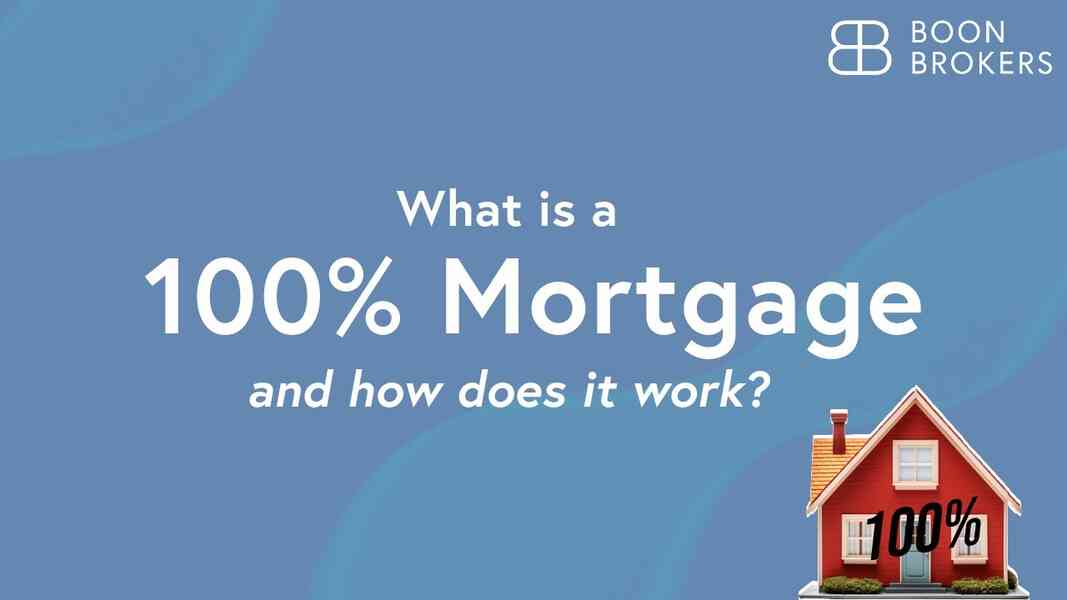UK Mortgage Surge Unlocks New Money Moves
A bold 100% mortgage deal shakes up the UK housing market, offering fresh paths to homeownership—here’s what you need to know now.

A Game-Changer Hits the UK Housing Market
The UK housing market just got a major jolt. April Mortgages, a relatively new lender, has rolled out a 100% loan-to-value (LTV) mortgage deal—the first of its kind since the 2008 financial crisis. This no-deposit mortgage, launched on May 16, 2025, allows buyers to finance the entire purchase price of a home without upfront cash. With interest rates starting at 5.99% and fixed for 10 or 15 years, it’s a bold move that’s turning heads. Verified by The Times and Bloomberg, this deal marks a pivotal shift in a market where affordability has long been a hurdle.
Why does this matter? For first-time buyers, the deposit barrier—often 5-10% of a home’s value—has been a dealbreaker. In London, where average home prices hover around £525,000 (per UK House Price Index, April 2025), that’s a £26,250-£52,500 upfront cost. April Mortgages’ deal wipes out that obstacle, potentially unlocking homeownership for thousands. But it’s not all rosy—higher interest rates and strict eligibility mean buyers need to tread carefully.
The Numbers Behind the Deal
Let’s break it down. April Mortgages’ 100% LTV deal targets borrowers with strong credit and stable incomes. The starting rate of 5.99% is notably higher than the UK’s average 5-year fixed-mortgage rate of 4.85% (Bank of England, May 2025). For a £300,000 home, a 15-year fixed mortgage at 5.99% translates to monthly payments of roughly £2,523, totaling £453,968 over the term (Bloomberg Mortgage Calculator). Compare that to a 90% LTV mortgage at 4.85%, where a 10% deposit (£30,000) cuts monthly payments to £2,115, totaling £380,700 over 15 years. The no-deposit deal costs £73,268 more in interest—a steep price for entry.
Market response has been swift. Shares of major UK homebuilders like Barratt Developments (LSE: BDEV) and Persimmon (LSE: PSN) rose 2.1% and 1.8%, respectively, on May 16, 2025, per London Stock Exchange data, as investors bet on a housing demand spike. Meanwhile, April Mortgages, a private lender backed by Dutch funding, reported a 15% surge in inquiries within 24 hours of the launch (Financial Times). The Bank of England noted a 3% uptick in mortgage applications week-over-week, signaling early traction.
Why Now? The Economic Backdrop
The timing isn’t random. UK house prices grew 2.8% year-on-year through April 2025 (UK House Price Index), but affordability remains strained. Wages rose 5.7% annually (Office for National Statistics), yet inflation at 2.3% (ONS, April 2025) keeps real income growth tight. First-time buyers, who made up 53% of UK home purchases in 2024 (Halifax), are desperate for solutions. Pre-2008, 100% LTV mortgages were common but vanished after the crisis due to defaults. April Mortgages’ reintroduction, with stricter credit checks, reflects confidence in a stabilizing economy.
The Bank of England’s base rate, steady at 4.75% since August 2024, supports this move. Lenders expect rates to hold or dip slightly in 2026, per Reuters polls, reducing the risk of over-leveraged borrowers. Still, the Financial Conduct Authority warned on May 15, 2025, that high-LTV lending must avoid “reckless” pre-crisis patterns. April Mortgages counters this with rigorous affordability tests, requiring borrowers to prove they can handle payments even if rates rise to 7.5%.
Expert Takes: Opportunity or Risk?
Financial analysts are split. Sarah Coles, head of personal finance at Hargreaves Lansdown, told CNBC that “this deal is a lifeline for deposit-starved buyers, but the higher rates mean it’s not a free lunch. Borrowers must stress-test their budgets.” She points out that a 1% rate hike could push monthly payments on a £300,000 loan to £2,700—a 7% jump. Conversely, Mark Harris, CEO of SPF Private Clients, told Bloomberg that “100% LTV mortgages could boost market liquidity, especially for new builds, where developers are offering incentives.” He predicts a 5-7% rise in first-time buyer activity by Q3 2025.
Economist Andrew Goodwin of Oxford Economics is cautious. In a Financial Times interview, he warned that “while the economy is stronger than in 2008, high-LTV lending could amplify risks if house prices stall.” UK house price growth is projected to slow to 2% in 2026 (Savills), which could trap borrowers in negative equity if values dip. Yet, Goodwin acknowledges the deal’s appeal: “For young buyers locked out by deposits, this is a rare chance to get on the ladder.”
Market Ripple Effects
The deal’s impact extends beyond buyers. Savills reports that new-build sales, which slumped 12% in 2024, could rebound as 100% LTV deals pair well with developer incentives like stamp duty coverage. This aligns with posts on X, where industry voices hailed the deal as “innovation” for the mortgage market. Major banks like Lloyds (LSE: LLOY) and NatWest (LSE: NWG) are watching closely, with Reuters suggesting they may launch competing products by Q4 2025.
Investors are also taking note. UK real estate investment trusts (REITs) like British Land (LSE: BLND) gained 1.5% on May 16, per FTSE Russell, as rental demand may soften if more renters buy homes. Conversely, buy-to-let landlords face pressure, as higher mortgage rates and potential tenant loss squeeze yields. Hamptons estimates buy-to-let returns dropped to 5.5% in 2025 from 6.2% in 2023.
Your Money Now: Actionable Tips
Ready to act? Here’s how to navigate this deal with verified strategies:
-
Crunch the Numbers: Use MoneySavingExpert’s mortgage calculator to compare 100% LTV costs against traditional mortgages. Factor in total interest over the term, not just monthly payments. For a £250,000 loan at 5.99% over 15 years, you’ll pay £189,360 in interest versus £149,760 at 4.85% with a 10% deposit.
-
Check Eligibility: April Mortgages requires a minimum credit score of 700 and a debt-to-income ratio below 40%. Pull your free credit report from Experian to confirm you qualify before applying.
-
Stress-Test Your Budget: Model payments at a 7.5% rate to ensure you can cope with hikes. For a £300,000 loan, that’s £2,700 monthly. Use Citizens Advice’s budgeting tool to test affordability.
-
Explore Alternatives: Skipton Building Society’s “Delayed Start” mortgage, launched May 2025, offers three months payment-free. It’s lower risk if you need short-term flexibility.
-
Watch the Market: Track house price trends via Rightmove’s monthly index. If prices stagnate, high-LTV loans risk negative equity. Consider waiting for a dip if you’re in a high-price area like London.
-
Get Advice: Consult a FCA-regulated broker via Unbiased to compare deals. They’ll spot hidden fees or better rates, potentially saving £1,000s over the loan term.
Risks to Watch
No deal is perfect. The 5.99% rate, while competitive for 100% LTV, is pricier than sub-5% rates on 85-90% LTV mortgages (Moneyfacts, May 2025). If rates fall in 2026, as ING predicts, you could be locked into a higher rate for 10-15 years. Early repayment fees, often 3-5% of the loan, also limit flexibility (Which?). Plus, with no deposit, you start with zero equity—a risk if prices drop 5% or more, per Nationwide’s 2026 forecast.
The Bigger Picture
This deal isn’t just about mortgages—it’s a signal. The UK housing market, long stagnant for young buyers, is seeing innovation. Posts on X predict more “full fat” 100% LTV deals soon, suggesting a lender race to capture first-time buyers. If successful, April Mortgages’ move could push competitors to loosen criteria, boosting homeownership but also debt levels. The Bank of England will likely monitor this closely, with potential rate tweaks if lending overheats.
For now, the deal offers a rare shot at owning a home without years of saving. But it demands discipline—overstretching could lead to trouble if rates rise or incomes falter. Stay sharp with Ongoing Now 24.





